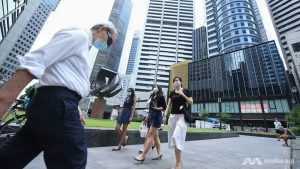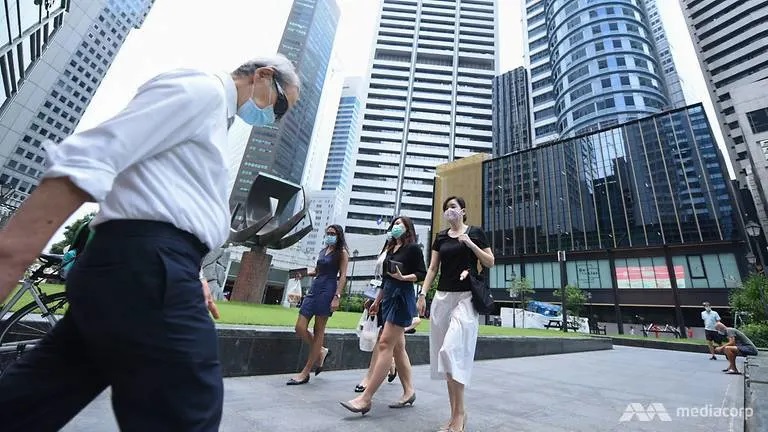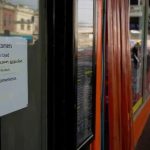
Office workers at Raffles Place.
SINGAPORE: Singapore has entered a technical recession after its economy contracted 41.2 per cent in the second quarter from the previous three months, dragged down by weak external demand and COVID-19 “circuit breaker” measures.
Several months of COVID-19 restrictions and workplace closures have battered Singapore’s construction, retail and tourism sectors, with little sign of the pain abating.
The authorities have flagged that they expect Singapore’s gross domestic product (GDP) to shrink between 4 and 7 per cent this year, as the coronavirus outbreak continues to pose severe strains on the economy.
On a quarter-on-quarter seasonally adjusted annualised basis, Singapore’s GDP shrank 41.2 per cent in the April to June period, deepening the 3.3 per cent contraction in the preceding three months, said the Ministry of Trade and Industry (MTI) in advance estimates on Tuesday (Jul 14).
This means that Singapore has entered a technical recession, defined by economists as two consecutive quarter-on-quarter contractions.
Economists polled by Reuters had expected a 37.4 per cent shrinkage.
Year-on-year, the economy shrank 12.6 per cent, deteriorating from the first quarter’s revised 0.3 per cent decline.
The construction sector was the worst hit in the second quarter, contracting 54.7 per cent year-on-year after the first quarter’s 1.1 per cent fall. On a quarter-on-quarter basis, the construction sector plunged 95.6 per cent.
This as the circuit breaker halted most construction activities and other measures such as movement restrictions at foreign worker dormitories brought about manpower disruptions, MTI said.
The services sector shrank 13.6 per cent year-on-year, also seeing a much steeper decline than its 2.4 per cent drop in the first quarter. On a quarterly basis, the sector fell 37.7 per cent.
Global and domestic travel curbs had “severely” affected tourism-related sectors, while outward-oriented services sectors such as wholesale trade were adversely hit by falling external demand, said MTI.
Meanwhile, domestically oriented services sectors such as food services, retail and business services were also “significantly affected” by the circuit breaker rules, it said.
Manufacturing was the only sector to see growth when compared to the same period last year. The sector expanded 2.5 per cent year-on-year, although slowing down from the 8.2 per cent growth in the previous three months. On a quarterly basis, the sector contracted 23.1 per cent.
MTI said output in the biomedical manufacturing cluster surged during the second quarter, but weak external demand and workplace disruptions during the circuit breaker weighed on output in the chemicals, transport engineering and general manufacturing clusters.
The advance GDP estimates are computed largely from data in the first two months of the quarter – in this case, April and May which were the two months when non-essential economic activities were temporarily halted as part of the circuit breaker rules aimed at containing the COVID-19 pandemic.
Singapore exited the circuit breaker on Jun 1 and began a phased reopening of its economy. It entered phase two of the reopening on Jun 19, which allowed retail shops to reopen and restaurants to resume dine-ins while observing social distancing.
To nurse the economic pain, the Government has announced four support packages worth close to S$100 billion, or nearly 20 per cent of GDP, so far.
The measures include wage support for affected employers and cash payouts to adult Singaporeans.



